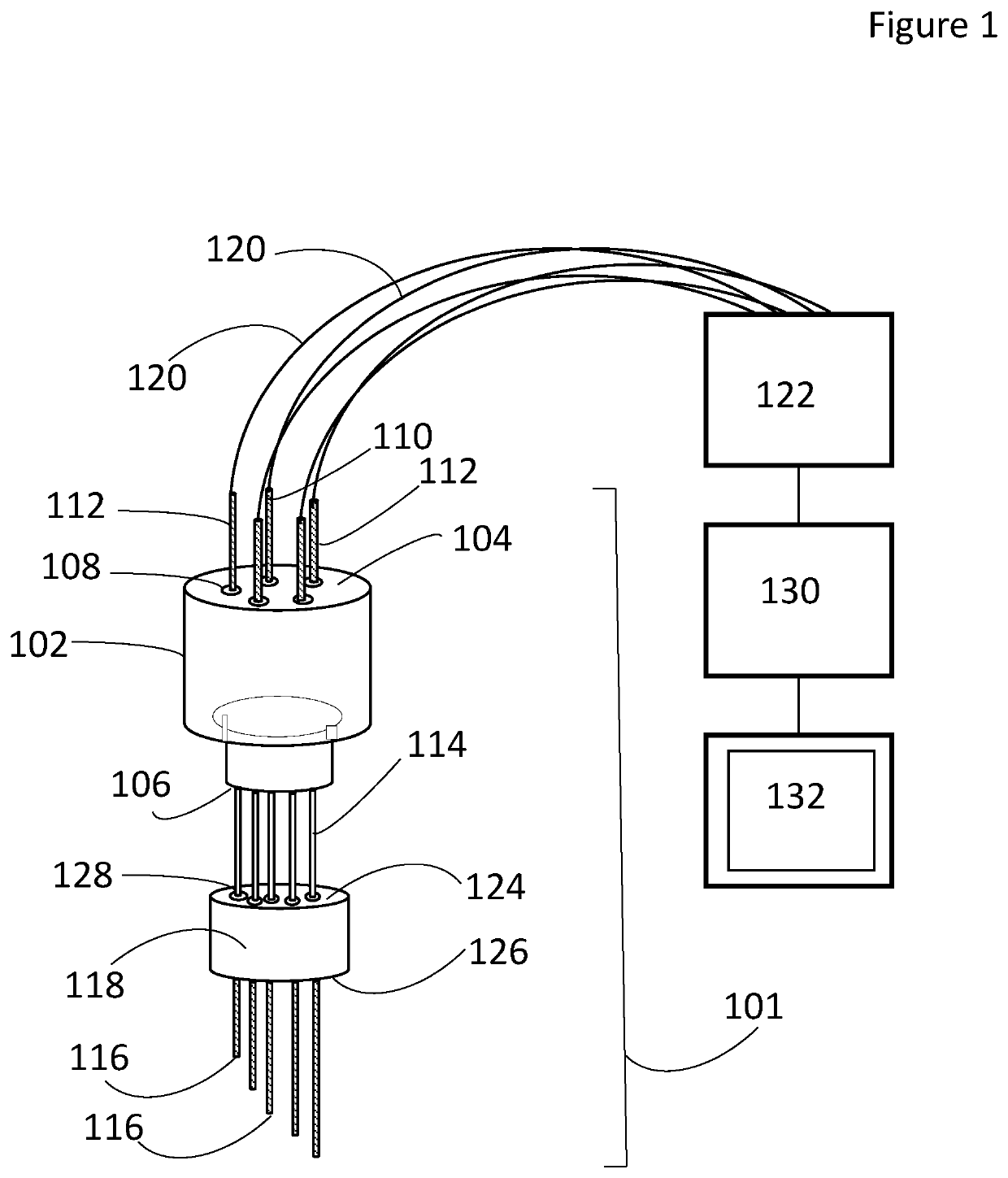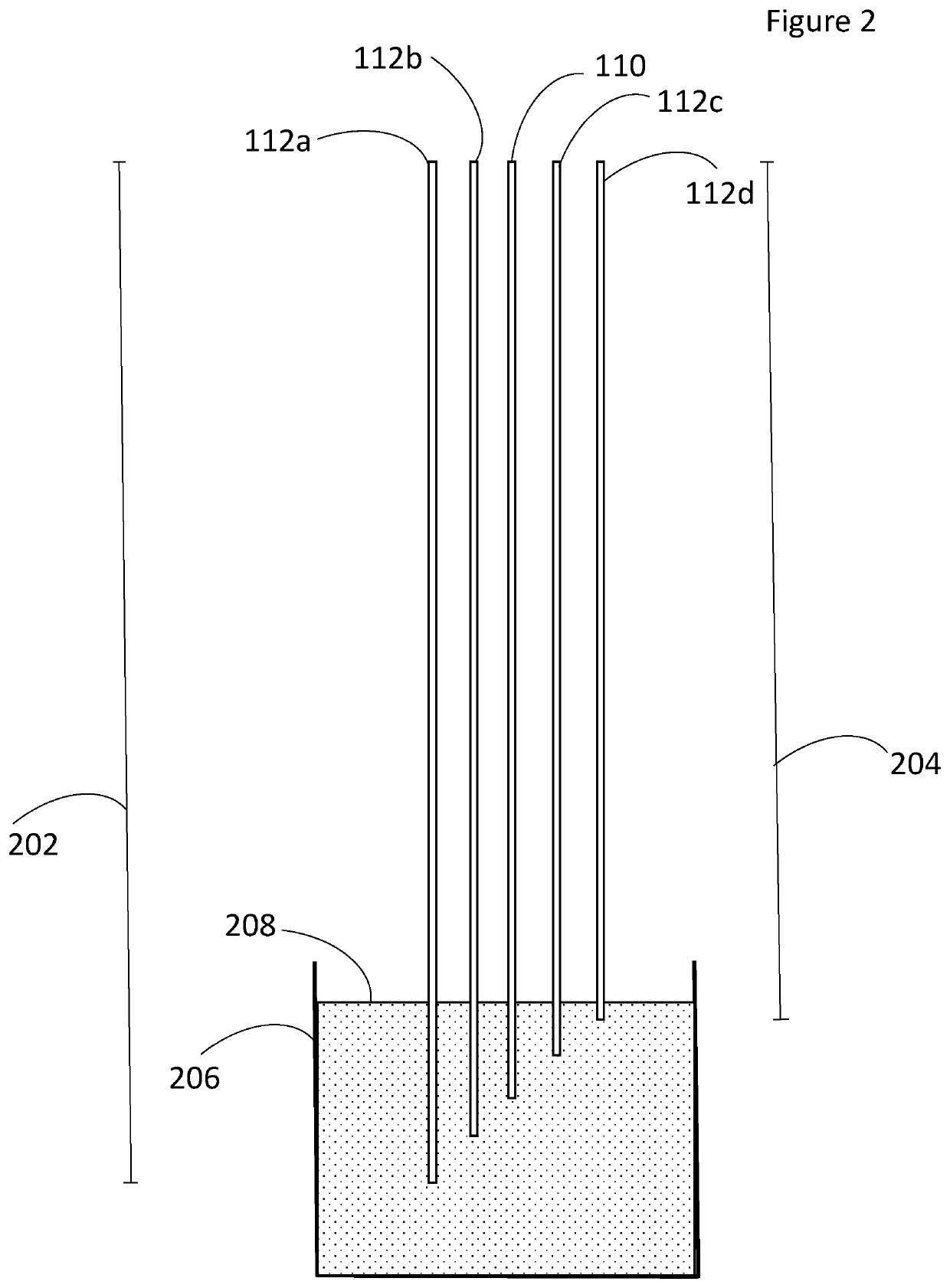Multielectrode sensor for concentration and depth measurements in molten salt
a multi-electrode sensor and concentration measurement technology, applied in the direction of measurement devices, instruments, material electrochemical variables, etc., can solve the problems of inability to know whether or not a current response is large, technique is slow, loss of non-conductive coating, etc., to save time, accurate results, and the effect of reducing the frequency of concentration measurements
- Summary
- Abstract
- Description
- Claims
- Application Information
AI Technical Summary
Benefits of technology
Problems solved by technology
Method used
Image
Examples
Embodiment Construction
[0017]The multi electrode sensor 100 provides in-situ, real time measurements for molten salts and other process fluids. For example, the sensor can provide real-time concentration and salt level measurements for nuclear systems such as molten salt reactors, nuclear reprocessing facilities utilizing molten salts and concentrated solar power systems. Concentration and salt level measurements are crucial for process monitoring to ensure proper chemistry and product quality and for nuclear material safeguards (i.e., material accountancy of salts containing nuclear materials).
[0018]As illustrated in FIG. 1, the sensor has an array 101. The array includes a plug 102. The plug has a top surface 104 and a bottom surface 106. Several openings 108 extend from the top surface 104 to the bottom surface 106. Each of the openings 108 is spaced equidistant from adjacent openings 108. The plug 102 is formed of a nonconductive material. In one embodiment the plug 102 is ceramic.
[0019]The array 101 ...
PUM
| Property | Measurement | Unit |
|---|---|---|
| current | aaaaa | aaaaa |
| unit depth | aaaaa | aaaaa |
| length | aaaaa | aaaaa |
Abstract
Description
Claims
Application Information
 Login to View More
Login to View More - R&D
- Intellectual Property
- Life Sciences
- Materials
- Tech Scout
- Unparalleled Data Quality
- Higher Quality Content
- 60% Fewer Hallucinations
Browse by: Latest US Patents, China's latest patents, Technical Efficacy Thesaurus, Application Domain, Technology Topic, Popular Technical Reports.
© 2025 PatSnap. All rights reserved.Legal|Privacy policy|Modern Slavery Act Transparency Statement|Sitemap|About US| Contact US: help@patsnap.com



